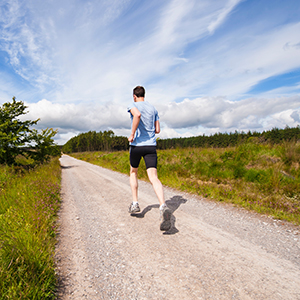When looking for tips For new runners and joggers, any kind of running workout improves your resting heart rate, elevates your overall fitness, reduces excess body fat and increases muscle strength, all of which boost your base level of fitness and most importantly, make you feel on top of the world!
Running Tips
You shouldn’t need any elaborate apparatus or overpriced fitness center membership to start a jogging plan, but there are numerous tips which you can follow to be certain you are both getting the most from your jogging plus reducing your risk of exercise related injury.
What Do You Need To Consider Before You Start Running?
With regards to starting any new sporting activity it is wise to consult a physician if you’ve any underpinning medical problems which you believe could either be worsened by running or could cause you problems in the long run.
For anyone with weight issues, you should definitely speak to your health care provider as a matter of course as even a small amount of jogging places a substantial amount of stress on at risk leg and hip joints which may already be fragile on an heavier person.
Sneakers
Adequate footwear is a extremely important element of running. Whilst the majority of people shouldn’t have to spend a small fortune professional training shoes, you might want to consider the following points:
Be sure that your trainers offer you both padding and ankle joint support otherwise you increase the risk of impact injuries that include stress fractures and joint and cartalige damage.
If you already know that you’re ‘flat footed’ or have partially collapsed arches then you are what is recognized as a ‘pronator.’ This is when the foot rolls too much to the outer edge when you are jogging and is common in runners of all ages and types.. If you are a pronator then this is not a problem at all, but you will need to invest in a pair of what are known as ‘stability trainers’ which manage the excess roll of your foot and greatly reduce the stress to your joints that jogging will cause..
Heading Out On Your First Jog
When you’re starting out as a new jogger it is recommended that you pace yourself to begin with until your body gets used to your new sport. Failure to do so may possibly result in some kind of injury and stop you from running.. Which is the last thing anyone would wish for!
Your first run really should be more of a walk/shuffle/jog so you can observe how your body adapts. Begin with a decent warm up of five to fifteen minutes of fast walking and then try and jog at an steady speed for say five minutes. After this five minutes, if you feeling breathless then slow down and walk for two minutes before picking up your speed again and jogging at a steady speed for an additional five minutes. Maintain this sequence a few more times, before walking for ten minutes as a cool off. The intention of this session is for you to find out your fitness level to help you gauge how to approach your next jog.
In future sessions you’ll want to increase the period of the jogging periods as well as reducing the quantity of recovery time in-between each jogging interval.
Technique
Focusing on running technique in the initial stages is very important, as if you learn proper running posture and running form in the early stages then it will be a lot easier than adjust your technique when you are stuck in your ways .
Decent jogging technique is essential as it enables you to run efficiently, and that means you can run for much longer with much less effort. Also, from a well being point of view, if you hold a good running style then you’ll reduce the danger of running connected injury.
When you jog, you need to have a somewhat straight back and be bending forward slightly from the waist. Usually, people have difficulties with this due to the fact they look at their feet — If you look forwards instead of down then your body should naturally line-up itself in the most efficient way. Running whilst bent over is not good running posture as you put a fair amount of stress on your lower spine.
When it comes to your jogging stride, you ought to move your legs in an almost cycling manner, making sure you keep your feet relatively pointing in the direction you are running for the most efficient stride.
This may be quite a bit to take into consideration when starting to run, as time passes you should find that you build an efficient running style that will make jogging a lot easier in the long run.
For a fantastic list of jogging tips, see A London Runners Blog.


